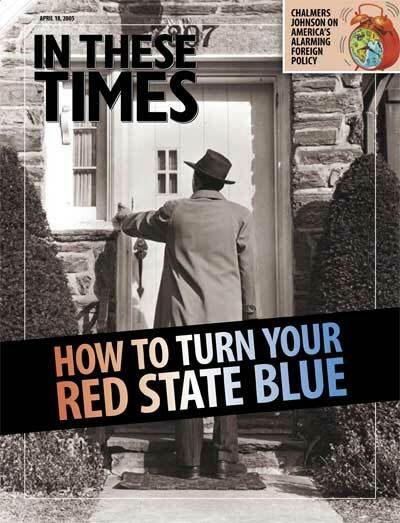It’s a strange thing when a letter from the school principal arrives on lime green and aqua stationery. Stranger still when the postmark is Burbank, California, and the return address reads “Imagineer That!” But it was real. The communique trumpeted “Disney Channel is coming to our school to help spark our creativity” — in a pre-packaged 90-minute assembly.
“Imagineer That! The Creativity Adventure” is designed to “help empower students to unleash their creative powers.” It folds “an imagination skills building workshop” and a sighting of Disney Channel star Ricky Ullman into the middle-school day, and follows up with a celebratory evening “wrap party.” Full participation is guaranteed by a chance to win a family vacation to (where else?) Walt Disney World. The principal described this hoopla as “a fantastic opportunity.”
The “Disney Hand,” as the corporate office that provided this opportunity is called, is devoted to extending Disney into every crevice of life, branding the company by creating emotional relationships with consumers. And our floundering, underfunded, overstressed public schools and their captive audiences provide the perfect gateway.
Historically, public schools have been our major entryway to citizenship and participation in society. They are where generations of immigrants became Americans, learned some notion of what we think is civic duty, and were prepared to enter the blue and white collar workforce. American public schools provided astonishingly good educations for free to hundreds of millions of people until, sometime in my lifetime, the upper tenth of taxpayers decided other people’s kids were expendable.
During the last two decades, most of the public schools my kids attended have endured unbelievable budgetary slashings and burnings. Now they’re faced with the draconian and punitive No Child Left Behind Act, which sets testing standards that are impossible to meet and then punishes schools for not meeting them. Low test scores in turn lead to more funding cuts, and libraries, music programs, phys ed and art become unimaginable luxuries. Not coincidentally, since 1997 there’s been what economist Juliet Schor calls “an explosive rise in nearly all types of school-based marketing” by media, food and consumer-product corporations. Schools’ current fragility makes them an even more “fantastic opportunity” today.
Into this grim scenario parachute the Imagineers, with their perky boowah about creativity.
My son, having grown up in a household of confirmed and unrepentant Disno-phobes, opted out with no prodding and spent assembly period in study hall. When it was over, I asked a few of his classmates what they’d seen and done. Thomas, 12, said the Imagineers had them “jump around and make noises like monkeys. They told us our teachers are Imagineers.” “Not much,” said young Tye, “but Ricky Ullman looks older than I thought.” In short, a forgettable affair, one more piece of the random flow of stuff directed downwards by the adults of the world, to be suspiciously evaluated and dismissed.
And what did the school get from this? Surely not a gift of 1,000 bucks to put towards pencils, glue and Kleenex — nor toward a new roof. Nope, it got a live appearance by a kid who’s been on TV and some good PR in the local newspaper at a time when the school is at risk for not meeting its Annual Progress under No Child Left Behind for the second year in a row.
And what did Disney get? A little piece of positive association; another school they can mention in their “Imagineer That!” ads and put on their list of charity cases. It’s small, but it accumulates, branding the company bit by positive bit as educational, oriented to community and the arts. This is not unimportant at a time when Disney is being roiled by scandals and takeover attempts.
What bothers me the most about Imagineers’ visit is the idea, endlessly repeated, that the Disney Company knows what imagination is and has a lock on the formula. Through its branding, the company has done a pretty good job of convincing Americans that Mickey Mouse stands for the unfettered mind.
Defining creativity and imagination is not easy. Philosophers, historians and psychologists have spent hundreds of lifetimes trying to explain what imagination and creativity are, but only a few things can be said for certain about it. You can’t teach somebody how to have it in an hour and a half, and you can’t test for it. You can only support the conditions that help creativity happen.
Then there’s that stamp on everything Disney: the Mickey Mouse hand. Distorted and disembodied, it suggests that creativity can be condensed into what is, in fact, a product. Our human hands are a beautiful, flexible interface between our bodies and minds and the rest of the world. For millennia, the open five-fingered hand has signified power, making, blessing and love. Now we’re supposed to think our hands inferior to the puffy white glove? It’s beyond insulting.





